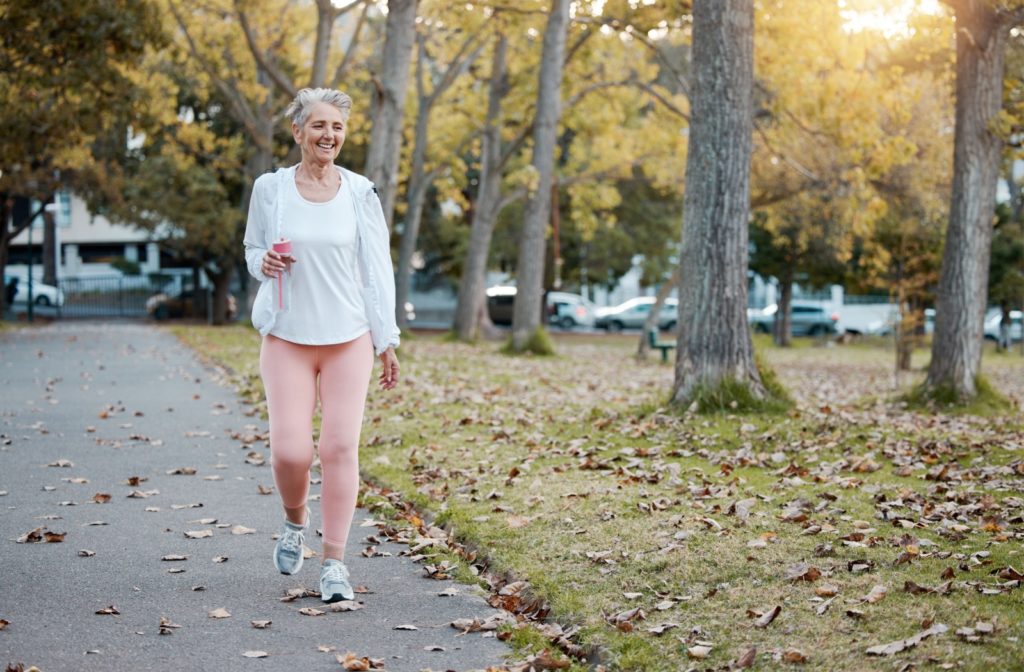Walking is one of the simplest yet most effective ways for seniors to help maintain their physical and mental well-being. A regular walking routine can strengthen your body, uplift your spirit, and sharpen your mind, while staying connected to your community.
For older adults and caregivers alike, walking offers a low-impact, accessible exercise that many can enjoy. The benefits are plentiful, whether you’re taking a stroll in the park, walking with friends, or exploring a new trail in your area.
Why Walking is the Perfect Exercise for Seniors
When it comes to fitness for seniors, walking is truly a standout. Here’s why:
- Low-impact on joints: Walking is typically gentle on the body and reduces the risk of the injuries that might come from high-impact activities.
- Accessible to many: No fancy equipment or gym memberships are needed to get started walking, just a comfortable pair of shoes and some motivation!
- Customizable: You can adjust the pace and duration to match your fitness level, making it an easier choice for older adults.
If you’re still not convinced then let’s next talk about some of the physical benefits of walking regularly.
The Physical Benefits of Walking
Regular walks can offer older adults a good variety of physical benefits while reducing the risk of injury or accidents. Here are a few ways:
Cardiovascular Health
Even 20 to 30 minutes of walking per day per day can significantly improve heart health. It helps reduce blood pressure, improve circulation, and lower cholesterol, lowering the risk of cardiovascular disease over time.
Strengthens Bones & Joints
Walking encourages bone density and helps prevent osteoporosis. It also improves joint mobility, which is important for maintaining flexibility and strength. This can be a useful benefit for managing arthritis symptoms and improving overall quality of life.
Maintains Balance & Reduces Fall Risk
Walking regularly can help strengthen leg muscles and improve coordination, which are useful for maintaining balance and stability. As a result, older adults may experience a reduced risk of falls and injuries, helping them stay more independent and active.
Helps with Weight Management
Pairing a walking routine with proper nutrition can be a good way to maintain a healthy weight, especially considering metabolism generally slows with age. A balanced diet, rich in nutrients, can further support energy levels and help the benefits of regular physical activity.

The Mental Health Benefits of Walking
Physical health and growth isn’t the only thing that can be improved through walking but it can also be a beneficial activity for one’s mental well-being.
Reduces Stress & Anxiety
A peaceful walk outdoors among the trees and fresh air can help to relieve anxiety and reduce stress, thanks to the endorphins released during exercise.
Improves Cognitive Function
Studies have pointed to a direct link between walking and maintaining brain health. In fact, regular walking may even reduce the risk of cognitive decline and diseases like Alzheimer’s.
Combats Feelings of Loneliness
Walking with a group or a companion can help to foster stronger connections. Walking can be as much a social activity as it is a physical exercise.
Simple Tips to Begin a Walking Routine
Starting a walking routine doesn’t have to be complicated. Here’s some simple steps to follow to get started moving safely and comfortably:
- Invest in supportive shoes: A well-fitted, cushioned pair of walking shoes can help for avoiding discomfort and injuries.
- Choose the right path: Try to pick flat surfaces or marked park trails to help stay safe while out on your walk.
- Find your pace: Slow and steady wins the race! Start slow if you’re new to walking and gradually increase the speed and distance over time.
- Stay hydrated & protected: We recommend carrying a water bottle and wearing weather-appropriate clothes. Don’t forget sunscreen on sunny days!
Building a Walking Community
Feeling like a part of a community is important for older adults, and walking can offer a great opportunity to connect with others. Here are a few ideas to build relationships and make walking more enjoyable:
- Form a neighborhood walking group: Invite friends or neighbors for a weekly stroll.
- Join a club: Many communities organize walking clubs for older adults, you might consider joining. Check out some of the activities at Park Gardens Senior Living!
- Attend a local event: Charity walks or park meet-ups can be another fun way to get walking and meet new people.
By building a walking community, older adults can not only improve their health but also create meaningful social connections that enhance their overall well-being and sense of belonging.
Want to Learn More About Staying Active?
Take the first step toward a healthier, happier lifestyle. Contact Park Gardens Senior Living today to learn how we can support you or your loved one’s wellness goals. Our dedicated team is here to provide personalized care and resources to help you along the way.



